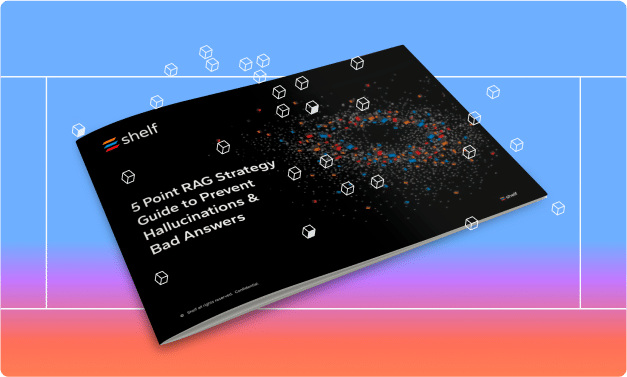A data lakehouse is a modern data management architecture that’s designed to handle diverse data types and support advanced analytics. It’s a valuable tool for data scientists, project managers, AI professionals, and organizations that rely on data-driven decision-making.
As businesses increasingly recognize the importance of leveraging data for competitive advantage, the data lakehouse architecture is emerging as a critical solution for meeting the demands of today’s data landscape.
What is a Data Lakehouse?
A data lakehouse is a modern data management architecture that combines the best elements of data lakes and data warehouses. It is designed to handle a wide variety of data types and support both structured and unstructured data in a single, unified platform.
Unlike traditional data architectures, a data lakehouse provides the flexibility to store raw data, like a data lake, while also offering the performance and reliability of a data warehouse. This architecture allows you to process your data without needing to move it between different systems.
By integrating the strengths of both data lakes and data warehouses, a data lakehouse offers a more streamlined and efficient approach to managing your organization’s data.
What is a Data Lakehouse Used For?
A data lakehouse serves as a versatile platform that supports a wide range of data processing and analytics tasks. Here’s what you can use a data lakehouse for:
- Advanced Analytics: You can run complex analytical queries on large datasets, gaining insights that drive informed decision-making.
- Machine Learning: data lakehouses support machine learning workflows, from data preparation to model training and deployment, enabling you to build and deploy AI models efficiently.
- Business Intelligence: With the ability to handle both structured and unstructured data, a data lakehouse allows you to perform real-time business intelligence, helping you monitor key metrics and trends.
- Data Storage and Management: You can store vast amounts of raw and processed data in a single system, making it easier to manage data across different departments and use cases.
- Data Integration: data lakehouses facilitate the integration of diverse data sources, allowing you to create a unified view of your organization’s data for more accurate and comprehensive analysis.
- Compliance and Reporting: The architecture of a data lakehouse supports regulatory compliance and reporting requirements by ensuring data accuracy, consistency, and traceability.
Data Lakehouse Features and Benefits
A data lakehouse combines the best features of data lakes and data warehouses, providing a versatile and powerful data management platform. Below are the key features of a data lakehouse and the benefits each offers:
1. Unified Data Storage
A data lakehouse allows you to store all types of data—structured, semi-structured, and unstructured—within a single platform. This unified approach reduces the complexity of managing multiple data storage systems. You’ll gain easier access to all your data for analysis and decision-making.
2. Schema-on-Read and Schema-on-Write
With support for both schema-on-read and schema-on-write, a data lakehouse provides flexibility in how you handle data. Schema-on-read allows you to ingest raw data without enforcing a schema, making it easier to store diverse data types. Schema-on-write ensures that structured data can be organized and queried efficiently, offering the performance benefits of a traditional data warehouse.
3. Advanced Analytics and Machine Learning
A data lakehouse supports advanced analytics and machine learning directly on the platform, eliminating the need to move data between different systems. This integrated capability accelerates the development and deployment of AI models, enabling you to extract insights faster and drive more value from your data.
4. Real-Time Data Processing
The ability to process data in real-time is a key feature of a data lakehouse. This allows you to perform streaming analytics and gain up-to-the-minute insights, which are crucial for time-sensitive decisions and operational efficiency.
5. Integrated Data Governance
A data lakehouse includes built-in data governance features that ensure data quality, consistency, and compliance across the organization. By providing comprehensive metadata management and access controls, it simplifies the governance process and reduces the risk of data breaches or compliance violations.
6. Scalability and Cost Efficiency
The architecture of a data lakehouse is designed to scale both storage and compute resources independently, offering cost efficiency as your data needs grow. This scalability ensures that you can handle increasing data volumes without significant infrastructure investments, making it a cost-effective solution for large-scale data management.
7. Support for Multiple Workloads
A data lakehouse is versatile enough to support a wide range of workloads, from simple reporting to complex machine learning tasks. This flexibility means you can use a single platform to address various business needs, reducing the overhead associated with maintaining separate systems for different types of data processing.
Data Lakehouse Architecture
The architecture of a data lakehouse is designed to integrate the strengths of both data lakes and data warehouses, providing a comprehensive platform for managing and analyzing data. Below are the key components of the data lakehouse architecture:
Ingestion Layer
The Ingestion Layer is responsible for bringing data into the data lakehouse. It handles data from a wide variety of sources, including databases, streaming data, IoT devices, and external APIs.
This layer supports both batch and real-time data ingestion so that your data is always up to date. It is designed to manage the diversity and volume of incoming data, making it accessible for further processing and analysis.
Storage Layer
The Storage Layer is where data is physically stored within the data lakehouse. This layer is optimized for scalability and cost efficiency, allowing you to store massive amounts of data in different formats, such as structured, semi-structured, and unstructured data.
This layer combines the cost-effectiveness of data lakes with the performance and consistency of data warehouses. It also supports data compression, encryption, and partitioning to enhance data management and security.
Metadata Layer
The Metadata Layer is crucial for managing and organizing the data within the data lakehouse. It stores metadata, which provides context about the data, such as its schema, lineage, and access controls.
This layer ensures that data is discoverable, understandable, and easy to govern. By maintaining a comprehensive catalog of metadata, this layer enables efficient data querying, governance, and compliance within the data lakehouse.
API Layer
The API Layer provides the interfaces and protocols that allow different applications and services to interact with the data lakehouse. It enables seamless integration with external tools, such as data visualization platforms, machine learning frameworks, and business intelligence systems.
This layer ensures that your data is accessible and usable by a wide range of applications, facilitating data-driven decision-making across your organization.

Data Consumption Layer
The Data Consumption Layer is where data is accessed, analyzed, and consumed by end users and applications. It supports various data processing and analytics workloads, including SQL queries, machine learning, and real-time data analytics.
This layer is optimized for performance, ensuring that data can be quickly retrieved and processed to meet the needs of different users and use cases.
The Data Consumption Layer also includes tools for data visualization and reporting, making it easier to derive insights and share them across the organization.
Data Lakehouse vs. Data Lake vs. Data Warehouse
Understanding the differences between a data lakehouse, a data lake, and a data warehouse is essential for determining the best data management architecture for your organization. Each of these architectures has unique strengths and is suited to different types of data workloads.
| Feature/Component | Data Lakehouse | Data Lake | Data Warehouse |
| Data Types | Structured, semi-structured, unstructured | Semi-structured, unstructured | Structured |
| Storage | Combines low-cost storage with performance layers | Low-cost, scalable storage for large datasets | High-performance, optimized storage for structured data |
| Data Processing | Supports batch and real-time processing | Primarily batch processing, some real-time | Batch processing with optimized queries |
| Data Schema | Schema-on-read and schema-on-write | Schema-on-read | Schema-on-write |
| Data Governance | Integrated metadata and governance capabilities | Limited governance; requires additional tools | Strong governance with built-in controls |
| Query Performance | Optimized for both fast queries and large-scale analytics | Unoptimized for query performance | Highly optimized for fast, complex queries |
| Data Accessibility | Accessible to a wide range of tools and applications | Requires data engineering to make data accessible | Easily accessible by BI tools, but limited to structured data |
| Use Cases | Advanced analytics, BI, machine learning, and data science | Data storage, raw data exploration, basic analytics | Business reporting, operational analytics |
| Scalability | Highly scalable with both compute and storage scaling independently | Extremely scalable for storage, less so for compute | Scalable, but often expensive to scale compute and storage |
| Cost | Cost-effective for both storage and processing | Low-cost storage, high cost for advanced processing | High cost due to performance and storage requirements |
Challenges of Using a Data Lakehouse
Implementing a data lakehouse can bring significant benefits, but it also comes with its own set of challenges. By recognizing these challenges, you can develop strategies to mitigate them and ensure that your data lakehouse is successful and sustainable.
Complexity in Integration
Integrating a data lakehouse with existing data systems and processes can be complex. The architecture combines elements of both data lakes and data warehouses, requiring careful planning to ensure seamless integration. You may encounter difficulties in unifying disparate data sources, tools, and workflows into a cohesive system.
Data Governance and Security
Managing data governance and ensuring robust security in a data lakehouse can be challenging. Since a data lakehouse stores a mix of structured and unstructured data, applying consistent governance policies and security measures across all data types is difficult. You need to balance accessibility with stringent security controls to protect sensitive data.
Performance Optimization
While a data lakehouse aims to deliver both storage efficiency and high performance, optimizing performance for diverse workloads can be tricky. You might face challenges in tuning the system to handle both large-scale data processing and fast query performance, especially as data volumes grow.
Cost Management
A data lakehouse can be cost-effective, but managing the costs associated with storage, compute, and data movement can be challenging. Without careful monitoring, costs can escalate due to the scale and complexity of the system. You need to implement strategies to optimize resource usage and control spending.
Skill Requirements
Implementing and maintaining a data lakehouse requires a diverse set of skills, including data engineering, data governance, and analytics expertise. Finding and retaining the right talent to manage a data lakehouse can be difficult, especially if your team is more familiar with traditional data architectures.
Data Lakehouse Examples
To better understand how a data lakehouse can be applied in real-world scenarios, here are some examples of how organizations use this architecture to enhance their data management and analytics capabilities.
Retail and E-Commerce
Example: A large retail company uses a data lakehouse to unify data from various sources, such as online transactions, in-store purchases, and customer interactions. By storing all this data in a single platform, the company can perform real-time analytics to personalize customer experiences, optimize inventory management, and improve supply chain efficiency.
The data lakehouse also supports advanced machine learning models that predict customer behavior and recommend products, driving higher sales and customer satisfaction.
Financial Services
Example: A financial institution leverages a data lakehouse to manage and analyze vast amounts of transactional data, market data, and customer information. The unified architecture allows the institution to perform risk analysis, fraud detection, and regulatory reporting on the same platform.
By integrating structured financial data with unstructured data like customer communications, the bank can gain a more comprehensive view of its operations and improve decision-making processes.
Healthcare and Life Sciences
Example: A healthcare organization uses a data lakehouse to consolidate patient records, clinical trial data, and research data into one platform. This enables the organization to conduct advanced analytics on patient outcomes, accelerate drug discovery, and improve personalized medicine approaches.
The ability to handle both structured clinical data and unstructured research data in a single environment allows for more effective data sharing and collaboration among researchers and clinicians.
Media and Entertainment
Example: A media company employs a data lakehouse to manage and analyze large volumes of content metadata, user behavior data, and social media interactions. This allows the company to deliver personalized content recommendations, optimize advertising strategies, and enhance audience engagement.
The data lakehouse supports real-time data processing, enabling the company to react quickly to trending topics and viewer preferences.
Manufacturing
Example: A manufacturing firm uses a data lakehouse to integrate data from IoT sensors, production systems, and supply chain operations. This integration enables the firm to monitor equipment performance in real-time, predict maintenance needs, and optimize production schedules.
By combining structured operational data with unstructured sensor data, the firm can improve overall efficiency and reduce downtime, leading to significant cost savings.
Best Practices for Building a Data Lakehouse
By following these best practices, you can build a data lakehouse that is not only robust and efficient but also capable of delivering long-term value to your organization.
Step 1: Start with a Clear Data Strategy
Before building a data lakehouse, you need to establish a clear data strategy that aligns with your organization’s goals. Define what data will be ingested, how it will be used, and who will have access. This strategy should address both immediate needs and long-term objectives.
Step 2: Design for Scalability and Flexibility
A data lakehouse should be designed to scale easily as data volumes increase. Choose a cloud-based or hybrid architecture that allows you to expand storage and compute resources independently. Additionally, ensure your architecture is flexible enough to support different types of data and workloads, from batch processing to real-time analytics.
Step 3: Implement Strong Data Governance
Data governance is critical for maintaining data quality, security, and compliance. Implement robust metadata management, access controls, and data lineage tracking from the outset. This will help you maintain control over your data.
Step 4: Optimize Data Ingestion and Processing
Use automated data pipelines to handle the ingestion of data from various sources, and implement data partitioning and indexing to speed up query performance. Optimize your processing engines to handle both real-time and batch workloads effectively.
Step 5: Leverage Automation and AI
Use AI-driven tools for data classification, anomaly detection, and data quality assessment. Automate routine tasks like data cleansing, transformation, and cataloging to reduce manual effort and minimize errors.
Step 6: Ensure Data Accessibility and Collaboration
A data lakehouse should be accessible to all relevant stakeholders in your organization. Provide user-friendly tools and interfaces for data exploration, analysis, and visualization. Encourage collaboration by enabling data sharing across teams and departments, while maintaining appropriate security controls.
Step 7: Monitor and Optimize Costs
Implement monitoring tools to track resource usage and identify areas where costs can be optimized. Consider using tiered storage, where frequently accessed data is kept in high-performance storage, while infrequently accessed data is moved to lower-cost storage.
Step 8: Plan for Continuous Improvement
Building a data lakehouse is not a one-time project. Plan for continuous improvement by regularly reviewing performance, identifying bottlenecks, and incorporating feedback from users.
A Unified Platform for Efficiency
The data lakehouse architecture represents an evolution in data management. Whether you are focused on advanced analytics, machine learning, or real-time decision-making, a data lakehouse provides a unified platform to manage and analyze data efficiently.
As data continues to grow in volume and complexity, the ability to handle diverse data types and workloads in a single architecture becomes increasingly important. For data scientists, project managers, and AI professionals, adopting a data lakehouse can lead to more streamlined operations, faster insights, and a stronger competitive edge.




